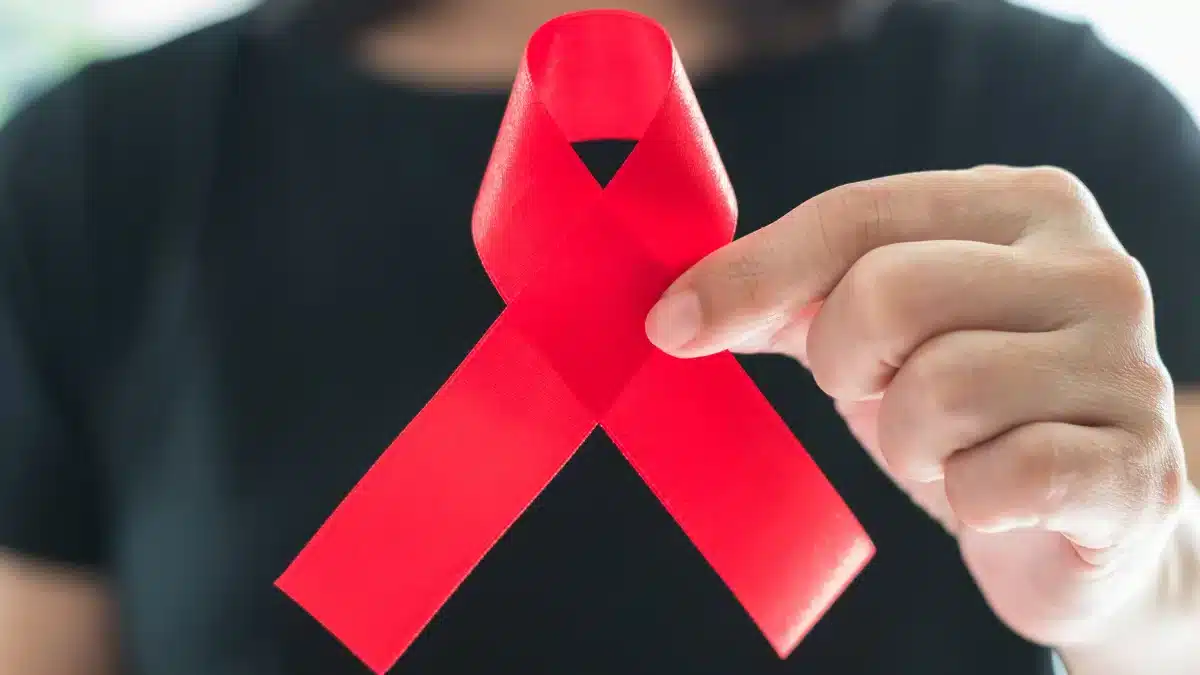Is HIV Contagious: Unveiling the Facts
HIV, or Human Immunodeficiency Virus, is a virus that weakens the immune system, reducing its ability to combat infections and diseases.
Since the epidemic’s start, around 85.6 million people contracted HIV, with about 40.4 million deaths, as per WHO.
Females below 17 years face heightened risk due to an immature cervix and limited vaginal mucus production.
Proper treatment and sticking to medications can help HIV-positive individuals live a healthy life.
To know more about HIV or is HIV contagious, delve into this article.
How is HIV transmitted
HIV spreads through contact with specific body fluids from someone with a detectable viral load.
These fluids include blood, semen, pre-seminal fluid, rectal fluids, vaginal fluids, and breast milk.
HIV transmission happens when the virus in these fluids enters the bloodstream through mucous membranes (found in the vagina, penis, and mouth), open cuts or sores, or by direct injection.
The prevalent way through which HIV can be transmitted from individual to individual is by indulging in sexual activity.
Sharing injection drug equipment and mother-to-child transmission during pregnancy, labor, or delivery, or through breastfeeding are some of the ways HIV can be transmitted.
HIV does not spread by casual contact, such as shaking hands, hugging, sneezing, kissing, etc.
How does HIV spread through semen or vaginal fluids

If someone with HIV has a detectable viral load, the virus can be transmitted to a sexual partner if their semen or vaginal fluids enter the partner’s body during vaginal or anal sex.
When a person with a detectable viral load has sex, and their semen enters their partner’s body, HIV can enter the partner’s bloodstream.
Pre-cum also contains HIV; even if a man pulls out of his sexual partner before ejaculation, the risk of infection getting transmitted is possible.
Risk factors of HIV
Factors and behaviors that increase the risk of acquiring HIV include:
- Indulging into anal or vaginal sex without using condoms
- Having other Sexually Transmitted Infections (STI), such as Syphilis, Herpes, Chlamydia, Gonorrhoea, etc., can increase the risk factor of getting HIV
- Participating in risky alcohol and drug use in the context of sexual behavior
- Sharing unclean needles, syringes, and other injection equipment, along with drug solutions
HIV vs STD Unraveling the Differences, Similarities, and Treatment
Prevention

Practicing safe sex, such as using condoms, lowers the risk of HIV transmission.
Additional precautions involve limiting sexual partners and refraining from sharing sex toys.
PrEP, taken consistently on a daily basis, can significantly decrease the likelihood of HIV transmission by up to 99%.
In certain circumstances, studies have demonstrated that male circumcision can lower the risk of HIV transmission.
Avoid sharing needles, syringes, or other injection drug equipment, as it can lead to HIV transmission.
Pregnant women with HIV can take medications to reduce the risk of transmitting the virus to their babies.
Antiretroviral Medicines and Therapy (ART) are highly effective in treating HIV and reducing the viral load in the blood, making the virus untransmittable.
Conclusion
HIV is a contagious virus with a significant global impact.
While transmission primarily occurs through specific body fluids during activities like unprotected sex and sharing needles, prevention strategies are key.
Engaging in safer sex practices, like condom use and limiting sexual partners, is essential.
Pre-Exposure Prophylaxis (PrEP), male circumcision, and antiretroviral medicines are effective preventive measures that can be adopted.
Education about risky behaviors, avoiding sharing drug needles, and treating other STIs further reduce the risk.
By understanding transmission routes and embracing preventive strategies, one can navigate through HIV and live peacefully.
Frequently Asked Questions
Is HIV contagious?
Yes, HIV is contagious. It spreads through specific body fluids during activities like unprotected sex, sharing needles, or from an infected mother to her child during childbirth or breastfeeding. Casual contact, like hugging or kissing, does not transmit HIV.
How is HIV transmitted?
HIV is transmitted through specific body fluids (blood, semen, vaginal fluids, rectal fluids, breast milk) from someone with a detectable viral load. Transmission occurs through mucous membranes, open cuts, or direct injection. Common modes include unprotected sex, sharing needles, and mother-to-child transmission during pregnancy, labor, or breastfeeding.
How long does the HIV virus survive?
HIV can last up to six days in dried blood at room temperature, but the virus concentration is usually low. The viruses are often damaged and cannot cause infection.
What is the treatment for HIV?
Antiretroviral medicines treat HIV by halting the virus’s replication, enabling the immune system to heal and prevent further harm. This crucial treatment supports individuals in managing HIV and leading healthier lives.
WowRx uses only high-quality sources while writing our articles. Please read our content information policy to know more about how we keep our content reliable and trustworthy.






